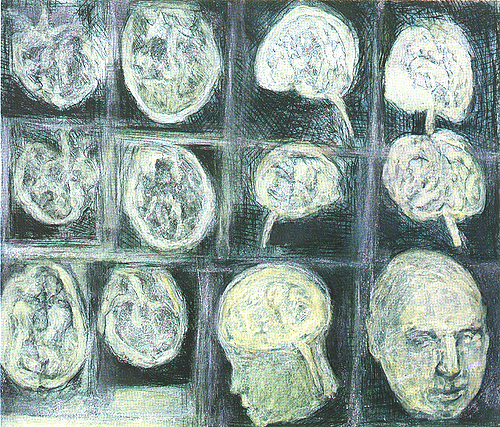'Magnetic Resonance Imaging 3-D'
(dry point engraving, with tempera, 12' x 15')
©May H. Lesser
In the freshman anatomy course at UCLA, in 1967, I etched a plate of a sagittal series of the head, sections of the human head embedded in plastic blocks, like book ends. The center cut was in the middle of the plate and at the bottom of the plate is the face of a man, joined with its side view meeting at the eye, the inside of the eye and the outside. I wrote for the book, "The Art of Learning Medicine," "The beauty of the original structures caused me to have a sense of intimacy: what could be more personal than to see the inside of a human head and hold it in one's hands and turn it over and see it this close to me?" I feel the same sense of wonder when I incise the copper plate to make this engraving of a MRI film in 3-D today. The means to learn by seeing clearly the many levels inside an alive human being, quickly and without pain or danger to him, is a pivotal contribution from radiology. Its beauty is awesome.
Last Reviewed: May 11, 2012



